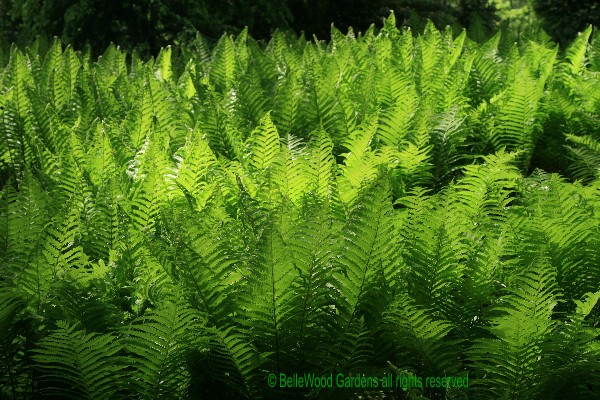
Wednesday, 28 April 2010
A Visit to Winterthur
The Tohickon Garden Club is off on a tour. Sixteen of us gathered together at the Doylestown, Pennsylvania K-Mart and sorted ourselves into four cars for the longish drive to Delaware. We're off to visit Winterthur in the morning, and after lunch, Mt. Cuba Center. It is going to be a long day, filled with good company, interesting conversation, and not one but two splendid gardens to enjoy.
Winterthur was the home of Henry Francis DuPont, whose birth in 1880 and death in 1969 straddled a previous millennium. His passion for gardening and horticulture resulted in a magnificent 60 acre naturalistic landscape with a tapestry of color and harmony as one season seamlessly transitions into another. There is something in bloom at Winterthur from January through November.
The morning began with clear skies and brisk temperatures, emphasized by breezy conditions. By the time we reached Winterthur conditions were getting progressively cloudier. No matter. The rain held off and the splendours we were to see would warm any gardener's heart. We met our guides at the visitors center and divided into two groups of eight. A good size, allowing for comments and questions. Fred started us off at a brisk pace. It never fails though. I start off at the front of the group and as picture follows picture I end up at the rear, even lagging behind.

Here's one of the first things that caught my eye, a wonderful colony of Matteuccia struthiopteris.
Its common name, ostrich fern, no doubt refers to the plume of fronds like an old fashioned feather duster.
Though in these modern times where Swiffer dusters are more often found I suppose the relevance is lost.
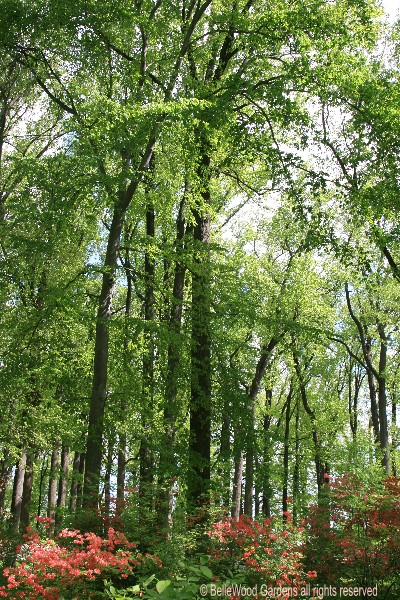
Into the eight acre Azalea Woods, where white oaks, tulip poplars,
and American beech form a towering canopy. Beneath are white
flowering dogwoods and hundreds of azaleas in white, pink, red,
salmon, and lavender. Wildflowers, Spanish bluebells, and ferns
carpet the forest floor. The painterly arrangements are masterful.

Kaempferi azaleas in coral red, and kurume azaleas in other colors are in spectacular bloom.
Our group could not have chosen a better time to come. It is a real treat for me. Previously
I visit a good six weeks earlier, when the March Walk is a carpet of blue from little bulbs.
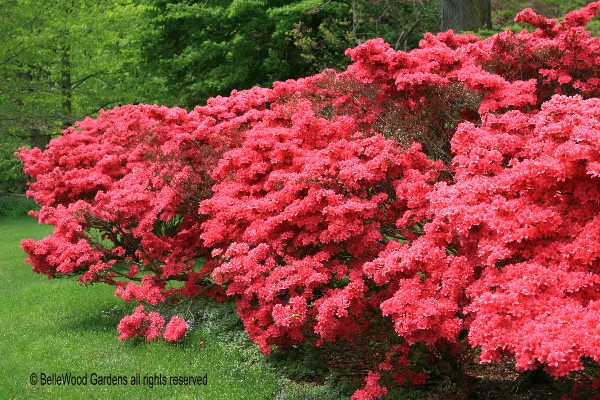
Azaleas in carefully placed groups so that vivid red
does not clash with a planting of peachy pink and salmon.

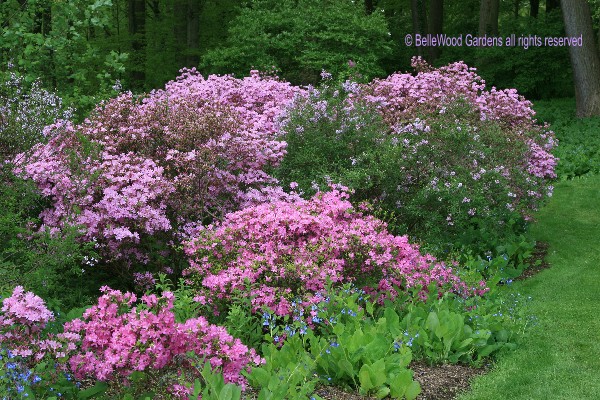
Subtle shading of lavender and lilac create a shimmering effect against the spring green turf.
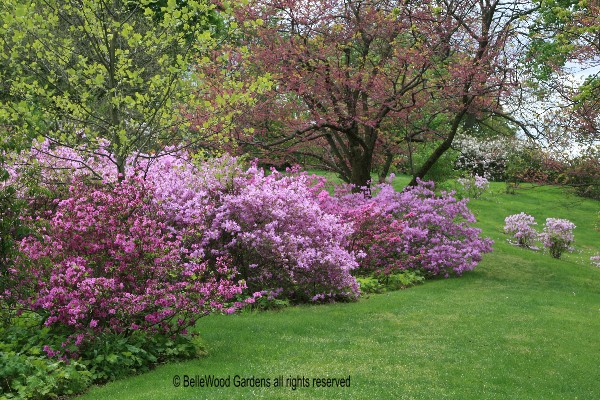
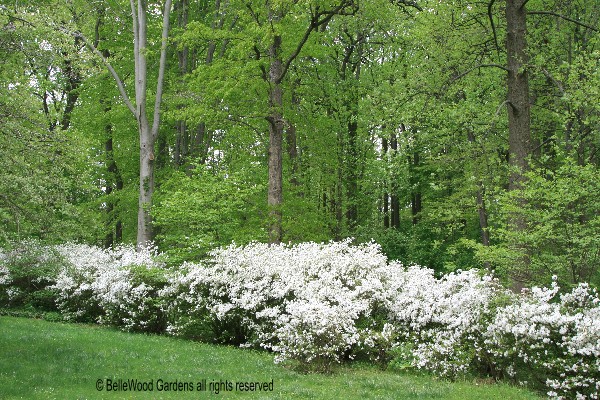
A cool and refreshing combination of white azaleas against the greening trees.
.
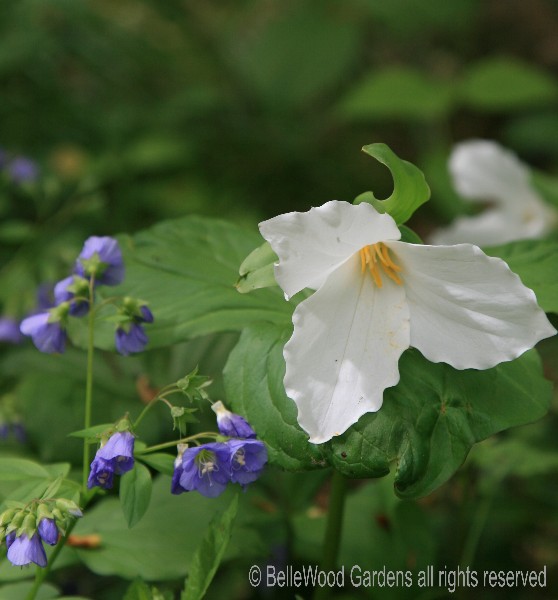
Trilliums by the hundreds. I narrow my focus and appreciate the elegant pairing
of Trillium grandiflorum's snow white flower with the blue of Polemonium.

The gently rolling landscape offers a moment to relax, nearly meditative,
whilst all we've just seen has a chance to sink in. Ponder what maturity
the years have brought to Mr. DuPont's vision for his garden's design.
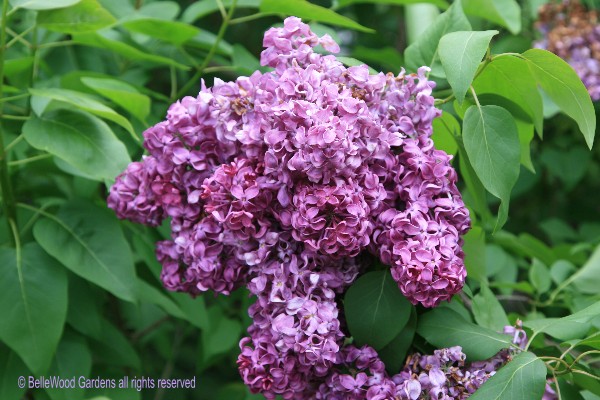
Lilacs on a cloudy day, with a richness of color and perfume.
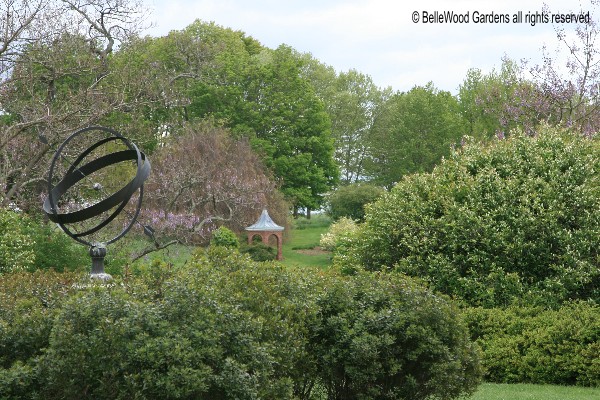
A charming armillary sphere or spherical astrolabe is to be seen as we walk past
a diversity of woody plants such as Paulownia in flower on its naked branches
and a bed of white rugosa roses coming into flower. This seems insanely early to me.
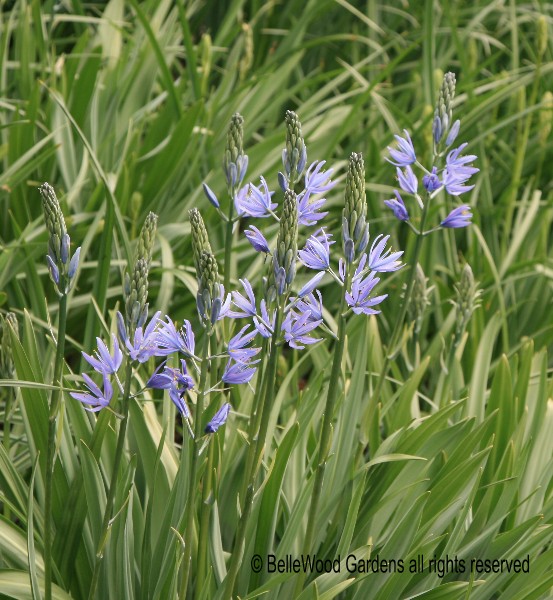
There's a massive planting of Lilium martagon in bud that I dearly want to see in flower.
meanwhile, here's a nice group of Camassia, native to the Pacific Northwest where
native Americans fought battles over collecting rights to its edible bulbs, something that
Sacagawea fed to Lewis and Clark on their expedition westward early in the 19th century.
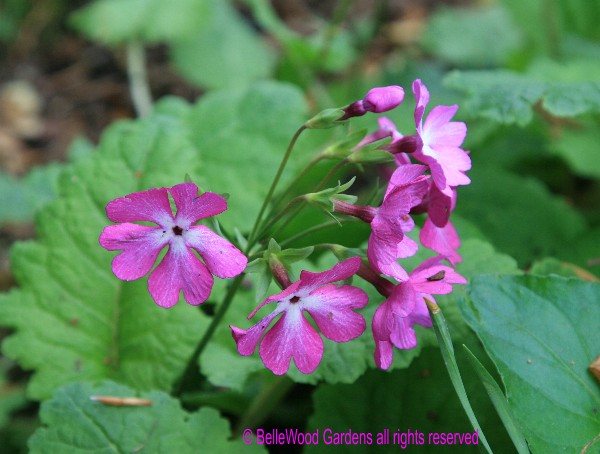
The Quarry garden is carpeted with Primula japonica in fuchsia, pink, and a few white flowered plants.
The massive planting is quite showy but I was even more attracted to the handful of elegant P. sieboldii
growing on somewhat higher ground among the stone ledges rather than the wet floor of the hollow.
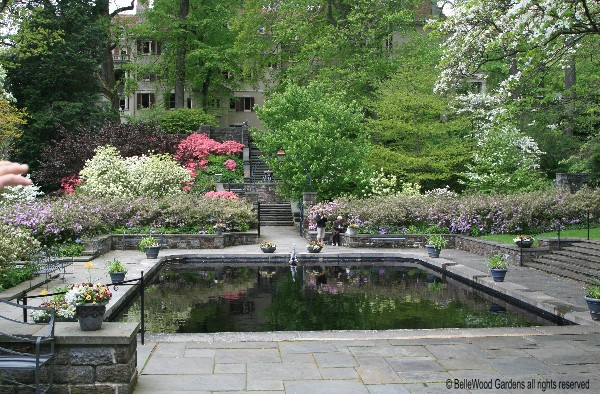
Back to civilization, I mean a building, and the rather formal design of the reflecting pool.
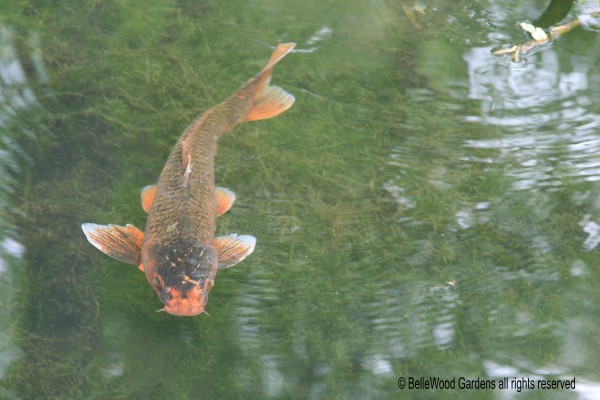
A nearby little pond, somewhat rustic and more natural in appearance is home to large koi.

According to Fred, our guide, this was Mr. DuPont's favorite view. It spoke so to his heart
that he requested it never be changed. Though the railroad station is rarely, if ever, in use,
the serene vista of hillside and buildings and trees remains as it was in his time. Well done.
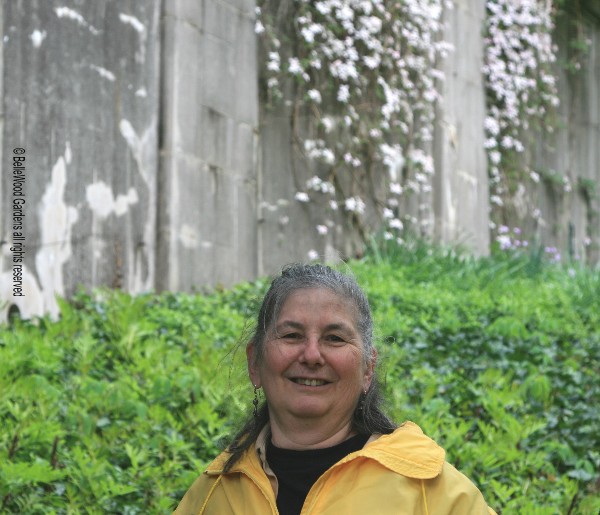
There was a man in the quarry garden making lists of plants in and out of bloom. I was
able to help with the names of some that Fred did not know. In return, I asked if he
would take my picture using my camera. He did, and here I am looking happy, happy
after a perfect morning at Winterthur in the company of friends, and flowering azaleas.